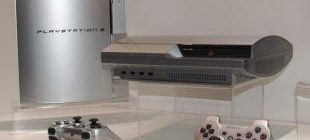 A photo from open sources
A photo from open sources
A small waving robot designed by New York University researchers soaring in the air simulating the ripple of the movement of an ocean jellyfish. This new method flight can be used in robots to monitor movement transport or changes in environmental conditions.
The flight of many robots is based on different models of movement insects, for example, fruit flies. However flapping wing flies internally unstable. The reason for this is a complex system reflexes due to which the insect must constantly adjust your flight to get away from a gust of wind, from a meeting with a predator or from another danger. Achieving this kind of integrated control over flying in a tiny robot is a serious a problem. This would not only lead to costly research, but it would also affect the size and cost of the robot. Instead of solve this problem, researchers at the University of New York developed a prototype robot, the flight of which resembles a “flight” jellyfish in the water column. Leif Ristrof – author of the idea of jellyfish – a robot – decided that aerodynamics of jellyfish can become the basis of design flying robot, while keeping its dimensions small. Such the method does not require any control or feedback and will Stay stable under various conditions. Device, presented on November 24 at a scientific meeting in Pittsburgh (USA), has four wings that look like flower petals, swaying up and down and located around the “waist” of the robot. At that while the pulsating movements of the wings resemble swimming of jellyfish, such a method is actually more like a moth flying. Winged the robot has a very modest size: the “jellyfish” is 8 cm wide and weighs about 2 grams. He can take off, get territorial guidance and fly in a certain direction, or just soar, but it cannot be controlled. The researchers found that the size of the robot is limited by its weight and power. Also so far this robot is “tied” and cannot fly freely, because it does not have its own power source and is connected to network. This robot is only evidence of this. flight principle, it is still far from practical application and from mass production, according to the developers New York University. Of course, such a device is already manufacturers from various fields are interested in because the flight jellyfish – a truly original solution to the problem of flying robots. Researchers are now working on reducing the size of the robot to one centimeter so that he can fly in very small spaces and go unnoticed.
Insect Robots






